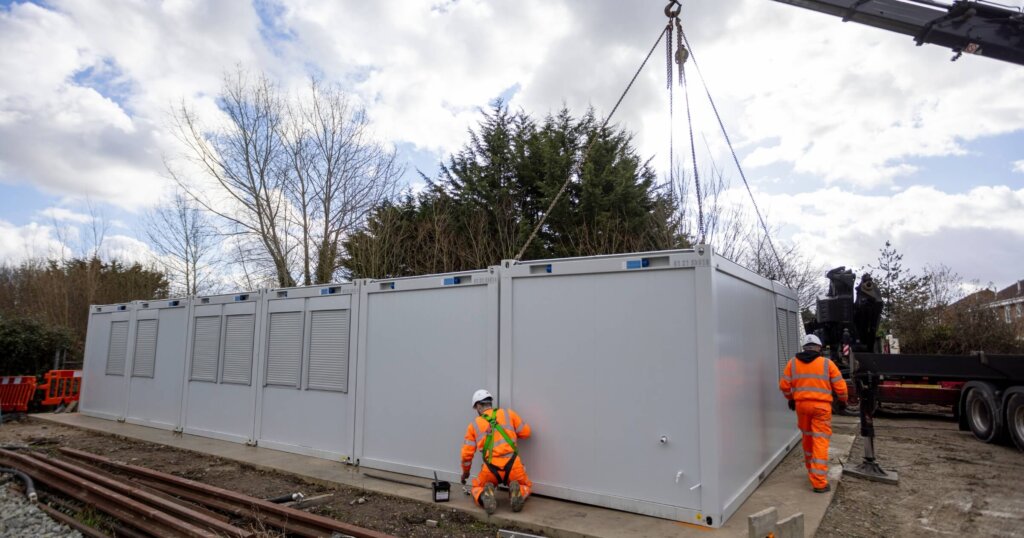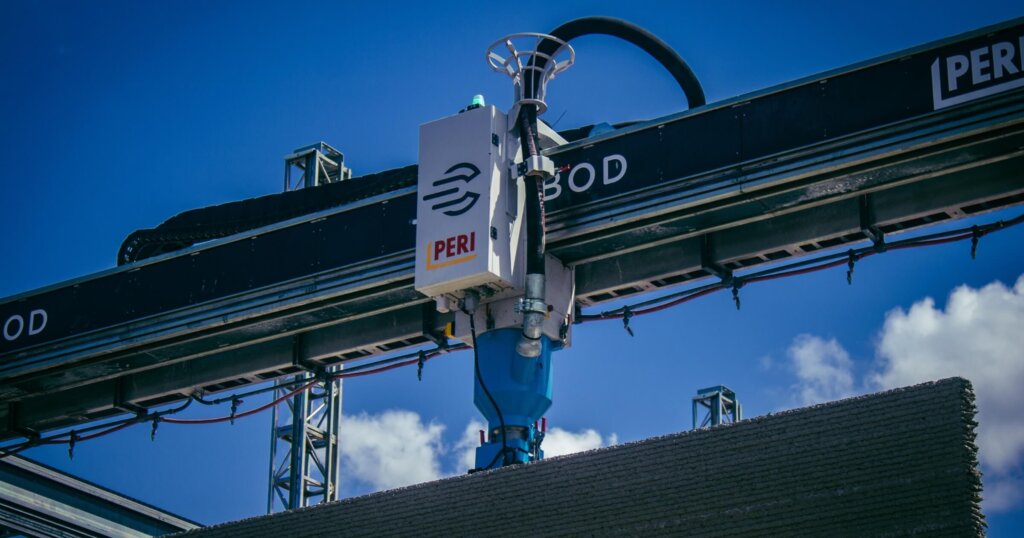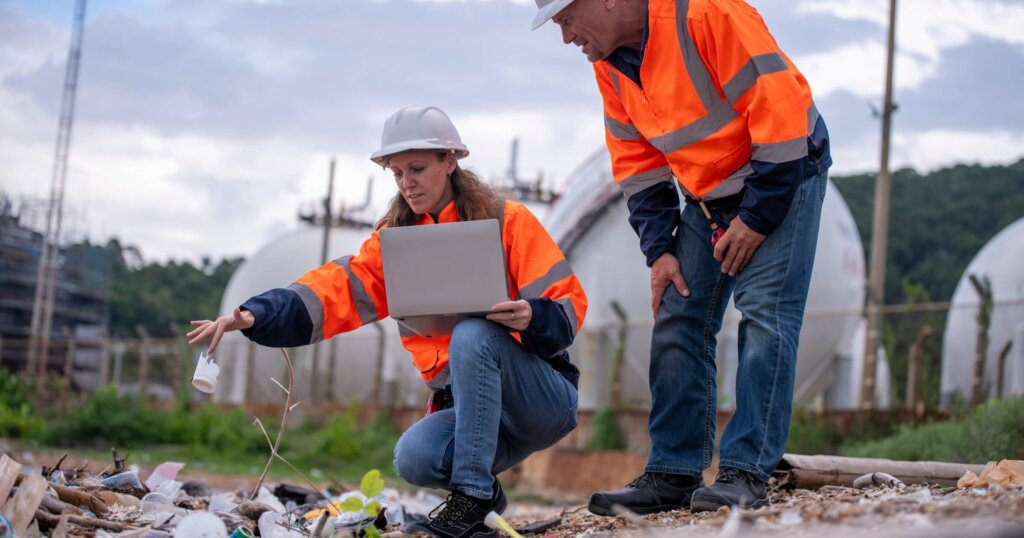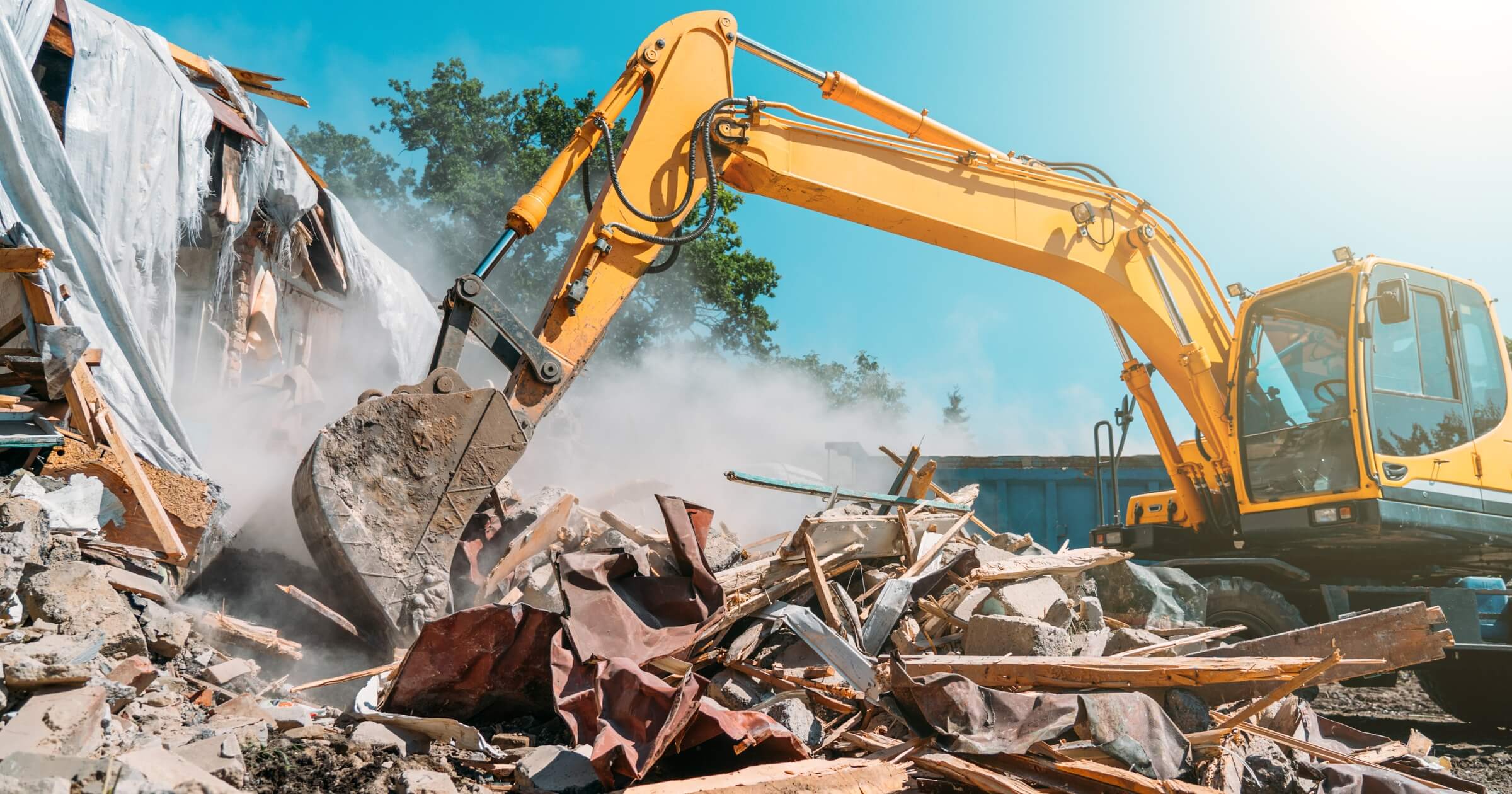As countries around the world commit to new sustainability pledges, construction companies worldwide are finding new ways to reduce waste and make their processes greener. The most popular construction waste trends adopted by companies in 2025 include using green concrete, BIM tooling, completing pre-project waste audits, and swapping to modular construction. In this article, we cover what these construction waste trends are, how they impact global construction waste, and what the future holds.
1. Modular construction

Photo courtesy of Shutterstock.
Modular construction, also known as prefabricated construction, is an innovative approach to assembly that involves combining structures from pre-manufactured modules. These modules are manufactured beforehand, in a controlled environment, before being transported to the construction site.
By preemptively producing parts of a structure, it reduces construction time and costs while also minimizing material and plastic waste. The process is more precise, and virtually no waste is eliminated. There’s also less packaging being transported to the site. It’s minimal waste and maximum productivity.
2. Using biodegradable and recyclable plastics
Another promising waste trend emerging is the use of recyclable and biodegradable plastics. These materials can be reused in new construction products or will simply break down over time, lessening the plastic added to landfills. Two of the options being commonly used today include:
- Recycled plastic lumber: This material is made from post-consumer plastic and serves as a strong, environmentally friendly alternative to traditional wood. It resists rot, moisture, and insects and is primarily used for fencing, decking, and outdoor fixtures and furniture.
- Polylactic Acid (PLA): This biodegradable plastic comes from sources like sugarcane and cornstarch. It’s often used in packaging and can also be adapted to construction uses like non-load-bearing structures or insulation.
3. Adaptive reuse
Adaptive reuse refers to the process of altering existing structures and reusing their materials for new purposes. Building reuse results in waste savings compared to demolishing and completely rebuilding a new structure. While adaptive reuse is still in it’s early stages, plenty of companies are finding ways to reuse old construction material.
The limitation of this waste reduction technique is that builders must use strong enough materials for the new structure, ensuring they’re up to the job. If done right, adaptive reuse can greatly reduce waste and speed up construction timelines as it can be more efficient than sourcing and creating new material for buildings.
4. 3D printed concrete homes

Photo courtesy of Shutterstock.
On a traditional construction site, workers would cut, shape, and build with materials like wood and concrete, generating significant waste. What 3D printing allows is direct material deposits right at the point of use, leveraging exactly the materials that are needed and no more.
Aside from being a waste reducer, the application of 3D printed construction also enables the use of alternative concretes and greener materials, including those made from renewable resources or with low carbon content.
5. Reducing plastic packaging
Sometimes, it’s the little things that count in reducing waste. Construction projects produce a ton of plastic waste through small packaging materials. To mitigate this, many construction companies are using new packaging developed to reduce plastic use.
Reusable packaging refers to containers that are more durable and can be reused multiple times. They’re sturdy and multi-purpose for items on and off the site. Eco-friendly material options include biodegradable films and paper-based alternatives to packaging, helping reduce the use of traditional plastic.
6. Green concrete
One of the most significant waste reduction trends in the construction industry is the development of green concrete. Green concrete uses waste material as a substitute for traditional cement. It requires significantly less energy to produce and produces far less CO2. It’s also durable and requires little to no maintenance. There are various forms of green concrete available on the market that are cost-effective lessening the need for fresh material. For example, CarbiCrete uses leftover materials from steel factories, like steel slag, and mix it with captured carbon dioxide. This method reduces the total amount of concrete used while maintaining the same level of structural strength.
7. Pre-project waste audits

Photo courtesy of Shutterstock.
Before projects even begin, there are ways to keep waste reduction top of mind. Teams can set waste reduction goals and make recycling plans by using a comprehensive pre-project audit. These audits determine where waste is most likely to occur and how to be mindful of reducing production.
Typically, project managers spearhead the pre-project waste audit and increase overall efficiency by making well-informed judgments about materials and suppliers. Ordering fewer materials and using them more purposefully means less waste upon project completion.
8. Mushroom, hemp, and bamboo materials
Another effective waste trend that’s becoming more popular is the use of green materials. There are many options available to construction companies that all offer the benefits of traditional construction materials but without the associated waste. Common examples include:
- Bamboo composites: Bamboo grows quickly, and this renewable resource is used to make composite materials that can replace hard plastic in many construction use cases.
- Hempcrete: Hempcrete is made from the wooden core of the hemp plant and is an alternative to traditional concrete. It’s insulating, lightweight, and absorbs carbon dioxide, making it carbon-negative when used.
- Mycelium insulation: This is the root structure of some mushrooms and is used to make biodegradable insulation paneling. These provide excellent thermal performance and will naturally decompose over time.
9. Use waste haulers that have recycling initiatives
Strides to reduce construction waste aren’t solely made on-site. Waste haulers, responsible for processing, transporting, and collecting waste materials, have long been one to contribute to landfills needlessly. Now, more waste haulers are implementing stringent recycling protocols, so construction companies are encouraged to leverage their services tailored to what kind of materials they are using to build.
10. Using BIM digital tooling

Photo courtesy of Shutterstock.
Technology adoption has generally been slow in the construction industry but BIM modeling is an exception. The most precise material ordering and planning starts with software that can support its intricacies. Building Information Modeling (BIM) software helps prevent waste production by providing granular forecasting and material ordering capabilities. It also connects everyone from contractors, to architects, and suppliers to collaborate on project outcomes. The latest BIM models are also integrating AI into the software making estimating material use more precise.
Economic impact of construction waste
As of 2023, the Global Construction & Demolition Waste Management market size was valued at 212.7 billion USD. They estimate that in ten years, the valuation will have risen to 369.9 billion.
To achieve lasting change in waste reduction in the construction industry, it begins with the construction culture. Normalizing consistent protocols around reducing waste looks like this:
- Setting a clear vision and strategy: Define your sustainability goals, apply those goals to the company’s core values, and ensure you’re getting support from the top down. These goals and strategies should be reiterated during onboarding, at training, in memos, and made a regular part of the conversation on and off-site.
- Empower and engage every worker: Provide proper waste reduction training and foster a culture of sustainability and stewardship. Create a “green team” to track how each project aligns with your goals and celebrate every success along the way.
Final thoughts
Waste use in the construction industry doesn’t have to be as dire as people think it is. If global leaders in construction make a greater effort to promote sustainable materials, collaborate with haulers that recycle, and leverage adaptable reuse, we can accelerate our transition to a greener future to achieve global sustainable goals faster.
The first step is knowledge about how to improve practices, the second is to integrate it into the worksite culture, and the third is to execute consistently.
Enjoyed this article about waste-friendly construction practices? You may also like:
- 10 global companies leading the shift to sustainable construction
- Mycocycle utilizes natural processes to reduce construction waste
- How modular construction supports a circular economy
- Are green buildings the key to counteracting climate change?
And don’t forget to subscribe to our newsletter and follow us on LinkedIn to stay in the know about sustainable practices in the AEC space.


